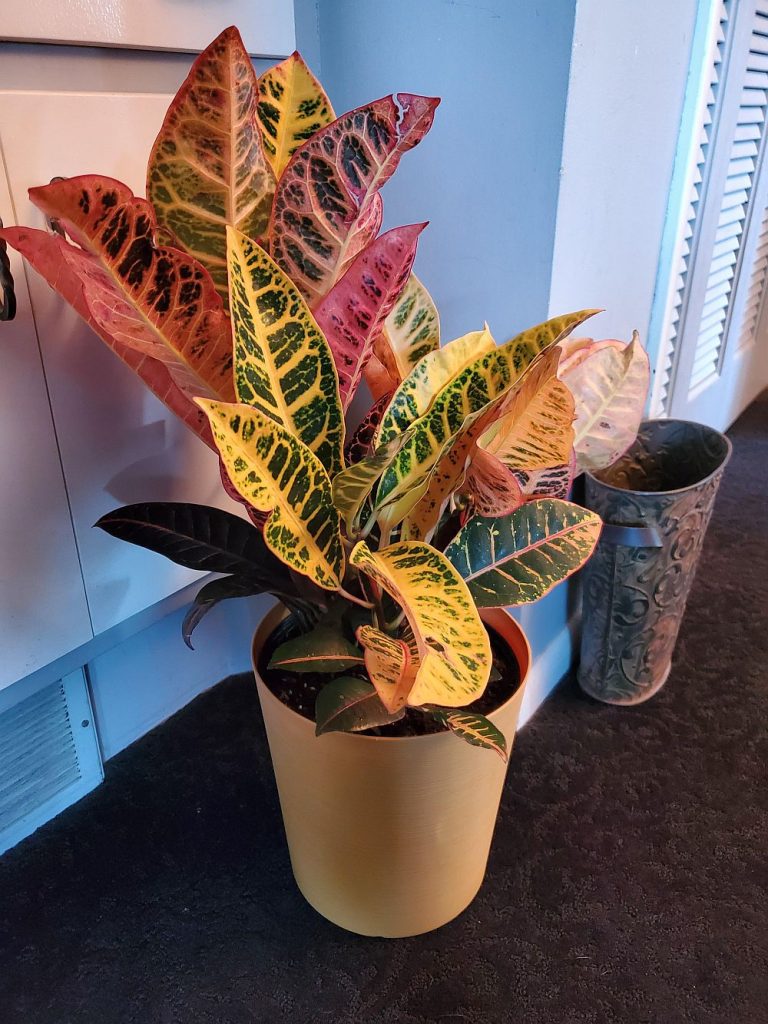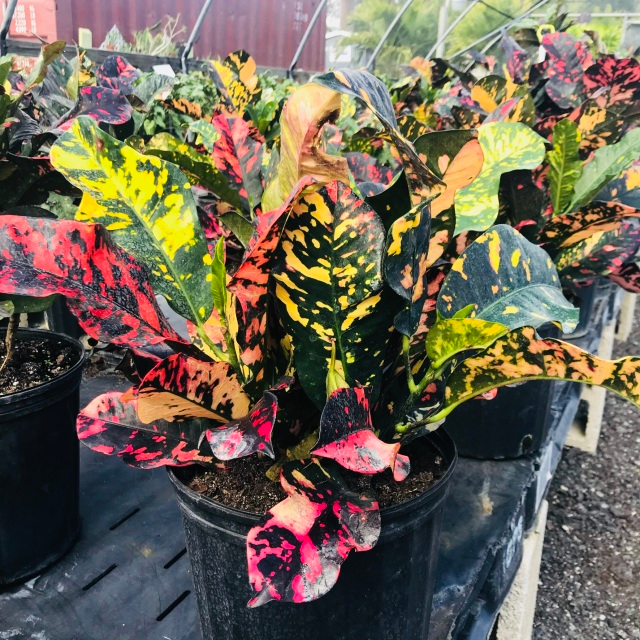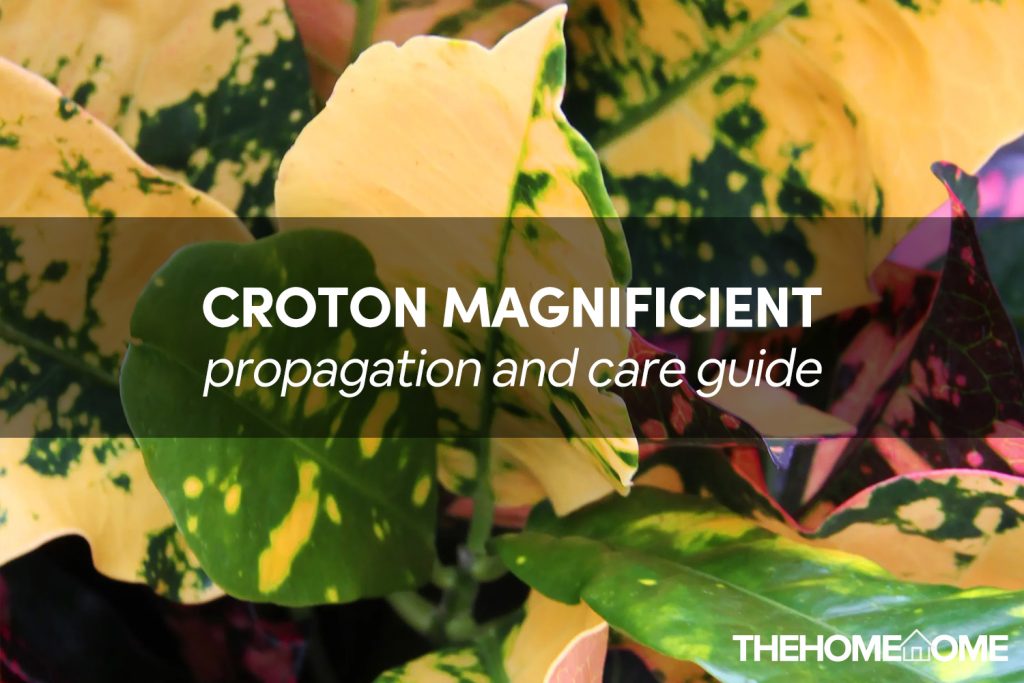Growing houseplants comes with preferences. Some people are particular about lush, green leaves in their home; however, some others are about the mix of different colors. If you are all for the multicolored flashy plants then we are certain you will love any of the croton variety.
A beloved variety of the croton plants is the croton magnificent, just like its name; this magnificent plant is your go-to if you desire to have an exotic touch of colors around you.
Apart from its beauty, one of the reasons the croton magnificent is loved is because it can survive extreme conditions without losing its colors or drying off. With this in mind, let’s get to know the croton magnificent more.
However, it is important to note that croton magnificent still requires a care guide. This article provides you with all the information you need to keep beautiful croton magnificent in your home for a long time.
Croton Magnificent Explained
The croton magnificent is a perennial houseplant that is native to tropical regions of Southeast Asia, majorly India and Malaysia.
It is otherwise known by its scientific name, Codiaeum Variegatum, while yet belonging to the Euphorbiaceae family. Croton magnificent is a slow-growing plant, however, with the best needs supplied, this lovely plant can reach about 10 feet tall.
As some already know, the magnificent plant earned its name by its many dazzling foliages, which include shades of orange, yellow, green, with beautiful spots on the leaves.

Although it is popularly grown as an indoor plant, this croton can survive as an outdoor plant, provided it is at the right temperature and given the needed care. The croton is indeed grown for its beautiful foliage, as well as its ability to withstand extreme conditions yet, stay beautiful.
| Common Name | Croton Magnificent |
|---|---|
| Scientific Name | Codiaeum Variegatum |
| Plant type | Perennial shrub |
| Soil Type | Well-draining soil |
| Light | Full sunlight |
| Soil pH | 6 to 7.0 |
| Native | Southeast Asia; Malaysia, India |
| Toxicity | Toxic. |
Croton Magnificent Propagation
Safe to add that croton magnificent is a rare plant to find, however, this plant has been kept alive and circulating via propagation.
Propagation, allows you to have the same prototype of the mother plant. There are two methods of propagating croton magnificent, and they will be provided below. Strict adherence to this guide will land you smaller sizes of croton magnificent in no time.
Step 1: Stem Cutting
- Select a healthy and mature mother plant, from which you can get your stem from. Ensure your mother plant is free of pests and diseases, to avoid a transfer.
- Choose a stem of 4 to 6 inches long and has about 5 leaves on it. Remove the leaves below, but leave about 3 leaves at the top.
- Dry out the sap by placing the cutting on a clean paper or newspaper, you can also tap the cutting in powdered charcoal to make it dry fast.
- Get a potting container or a potting mix. Ensure your potting soil has perlite and peat moss in it. Making use of the right type of soil will determine how healthy your plant will grow. Plant your cutting in the potting mix that has been provided.
- Once the cutting has been planted, use a big plastic bag to make a covering for your plant. This will help it maintain moisture and warmth, giving it a greenhouse vibe.
Step 2: Air Layering
- From your mother plant, identify a branch that is exposed to indirect sunlight. Make a diagonal cut through a limb below the growth node; ensure the cut is about one-half the diameter of the stem.
- Treat the wound with a rooting hormone and keep it open with a matchstick or a wooden toothpick.
- Apply some damp sphagnum moss on the cut area and wrap tightly with polythene; this will keep the place moist.
- Once a root is noticed from the plastic bag, cut the branch off, right below the layering before removing the plastic and plant the cutting in a container or pot of soil.
Croton Magnificent Care Guide
How do you care for croton magnificent? Below is a care guide to help you keep those amazing plants thriving.
1. Light
Plants with bright foliage enjoy and thrive best when placed in full sunlight and your magnificent plant is no different. This croton requires about 6 to 8 hours of sunlight daily to keep its colors shiny and vibrant. Growing croton magnificent in partial shade or utter shade will make it lose its colors and grow slower than usual.
Although croton magnificent is at its best when in full sun, it is important that during the summer, the number of hours is reduced, depending on your climate; your plant can get botched and get burns on its leaves.

2. Water
It cannot be overemphasized that croton plants enjoy being grown in evenly moist soil. Water your magnificent plant moderately, ensure the topsoil is completely dry before watering again. Not only can overwatering make your plant messy, but it can also develop root rot for your plant and this can terminate the entire plant.
3. Humidity
Humidity is an important aspect of ensuring your croton grows well as it should. Remember that your magnificent plant is native to tropical regions; hence it needs humidity to grow. Humidity can be provided when you grow this plant alongside other plants, however, if you have few plants in your home, a humidifier is an effective way of increasing the humidity for your favorite plant; magnificent.
4. Temperature
For multicolored foliage plants such as magnificent, the best temperature to place them is 60 degrees C, warm conditions scale up you’re their growth and help them grow better and lush leaves. Placing them in temperatures lower than 50 degrees C can ruin the plant. Ensure to keep it away from cold drafts or AC vents.
5. Fertilizer
The best time to feed your croton plant is summer or spring. Although we strongly recommend the use of compost in place fertilizers, however fertilizers are allowed during the growing seasons; spray soluble fertilizer once or twice during this season. It is advised that you do not fertilize your plant in its state of dormancy.
6. Soil
Magnificent croton, similar to all other varieties of croton will grow best when provided with a well-draining potting mix. A soil that isn’t well-draining will retain water and this can lead to root rot for your plant and eventually death. Rich and moist soil, with a pH of about 6 to 7.0 is perfect to grow your magnificent in.
Growing Tips
- Pruning keeps your plant in the shape and size that you want. it is expedient that you check your plant as often as possible to get rid of dead or weak plants and prune them off.
- Moving your plants from one location to another can make your plants lose some of their leaves, however, this is normal and you don’t need to be scared, your plant will come back to its health once it is accustomed to the humidity and temperature of the new location.
- Alongside being drought tolerant, the croton magnificent is not so susceptible to pests, especially if they are grown outdoor. However, indoors, they might be faced with spider mites and mealy bugs. Insecticidal soap and water are effective ways of getting rid of these insects.
- You must sterilize your gardening tools as often as possible so as not to infect your plant with bacteria or any fungi diseases.
Is Croton Magnificent Toxic?
What Is Croton Magnificent Used For?
Final Thoughts
Growing croton magnificent in your home isn’t a hard task it is known to survive extreme conditions, however, it is recommended that your plant be treated with utmost care as only as will you be able to enjoy its beauty and magnificent self.
Although fertilizers can be used for your croton magnificent, bear in mind that most croton plants are not so needy of fertilizers and will grow without them.
Keep reading:
- Croton Houseplant Care Guide (2022)
- Banana Croton Variety Care
- Croton Varieties, Plant Care & Problems (Complete Guide)
- Iceton Croton Plant Care And Propagation Guide
- Scindapsus Varieties: 6 Types Of Scindapsus Plants To Grow Today
- Pilea Varieties: 11 Types Of Pilea Plants To Grow Today
- Peperomia Varieties: 12 Types Of Peperomia Plants

